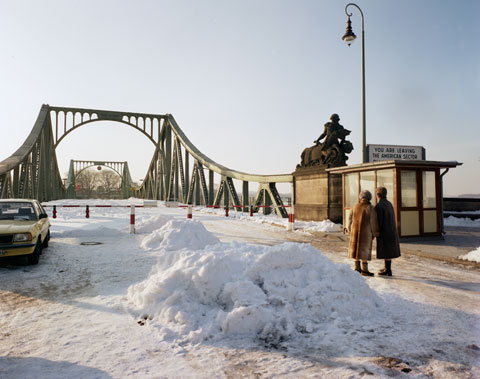New York/A Cold War Relic

Glienicke Bridge, Berlin • The site of many Cold War spy exchanges. • 1987
© Brian Rose (4x5 film)
It's hard to believe that it has been almost 19 years since the opening of the Berlin Wall and the subsequent collapse of the Soviet Union. My photographs of the former Iron Curtain, while increasingly distant history, seem more relevant than ever with the present cooling of relations between the western powers and Russia.
Today, I read in the Times, of the death of Wolfgang Vogel, one of the many shadowy figures of the Cold War--an East German lawyer trusted by both sides who arranged for the exchange of spies and dissidents across the border.
From the Times:
And in 1986, it was to Mr. Vogel that the United States turned to negotiate freedom for the imprisoned Soviet dissident Anatoly Shcharansky (later, as Natan Sharansky, a political leader in Israel). Included in an elaborately choreographed exchange of spies at the Glienicke Bridge because the Soviet authorities insisted that he was one, Mr. Sharansky exuberantly jumped into West Berlin over the border line painted on the deck.
Vogel, as I understand it, lived opulently in East Germany, enriched by his sponsors on both sides of the Iron Curtain. After 1989 he was convicted of various financial improprieties, won on appeal, and lived out his life in a resort in the Bavarian Alps.
He considered himself honorable in that he provided a service, helping thousands to reach freedom in the west. The East Germans needed a steam valve in their otherwise tightly sealed society, and they sought a means to bring in hard western currency. Vogel was the man for the job. He managed the human trade that bought freedom for the persecuted, while pocketing a fee for each transaction.

0 Comments:
Post a Comment
Links to this post:
Create a Link
<< Home